Restoring Handplanes: All About Stanley Planes
Rollie Johnson talks about the history of Stanley bench planes and explains what to look for when buying one.
Smoothing a board with a handplane is one of the most pleasurable processes in a woodworking shop. There is nothing like the feel of a well-tuned plane gliding across the surface, with whisper-thin shavings rising from the tool’s throat. And there is no faster way to create a glass-smooth, dead-flat surface for finishing.
A common misconception among new woodworkers is that you need an expensive plane to get the job done. But you don’t need to spend a fortune to catch the hand-tool wave.
Rejuvenating an old Stanley Bailey plane, whether it’s a garage-sale find or an eBay purchase, is a great way to get started handplaning without breaking a slim woodworking budget. Tearing down a plane to its bare chassis and building it back to blueprint specs not only creates a great performing plane, but also gives you an insight into how these wonderful bench mates work. Rollie Johnson has rebuilt dozens of Bailey planes over the years, and he has given more than 100 seminars on the subject. With his step-by-step approach, you’ll turn a clunker into a classic. Best of all, you don’t need special tools to get the job done.
In Episode 1 of my video series on restoring vintage planes, Johnson talks about the history of the Stanley line.
Why Baileys are a bargain
Stanley was making two styles of bench plane in the late 19th and early 20th centuries: the Bailey and the Bedrock. The Bailey came first. It was considered a working man’s plane, so it was produced in significant numbers and had a lower price point. The more refined Bedrock followed and because there were fewer made, the tool was more expensive than the Bailey. Today, that price differential remains.
When a bargain becomes a bummer
A used handplane is a bargain only if it’s serviceable. Inspect the plane for obvious flaws. Buying from an online source such as eBay is tricky because you have to rely on photos and the honesty of the seller. Some damaged or missing parts, such as knobs, totes, chipbreakers, and lever caps, can be replaced easily. A lot of the tools will have some rust, which often is easy to remove and repair. But if it’s so bad that parts have seized up or are seriously pockmarked, you may want to pass on the tool.
Josh Clark’s Stanley bench plane type
study is available on HyperKitten.com.
For more information on the history of Bailey bench planes:
Webinar: The history of Bailey handplanes – Join Joshua Clark for a fascinating look
at the history of handplanes, and the progression of the Stanley plane through the decades.
Videos in the Series
-
Restoring Vintage Handplanes with Rollie Johnson: IntroductionJanuary 27, 2021
-
Restoring Handplanes: All About Stanley PlanesJanuary 27, 2021
-
Restoring Handplanes: The Parts of a Bench PlaneFebruary 3, 2021
-
Restoring Handplanes: Cleaning and RepairingFebruary 10, 2021
-
Restoring Handplanes: Tuning up PartsFebruary 17, 2021
-
Restoring Handplanes: Sharpening and SetupFebruary 25, 2021
-
Restoring Handplanes: Block PlaneMarch 3, 2021
-
Tuning and Using the Stanley 82 ScraperMarch 10, 2021


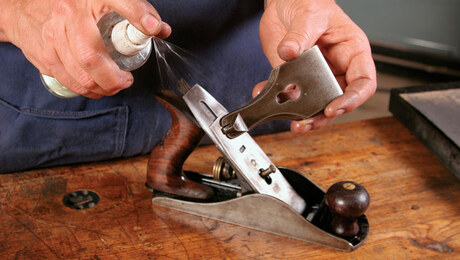
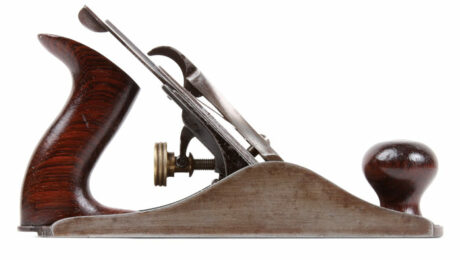
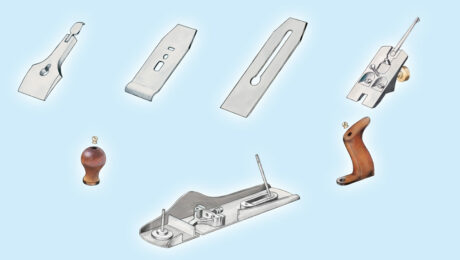
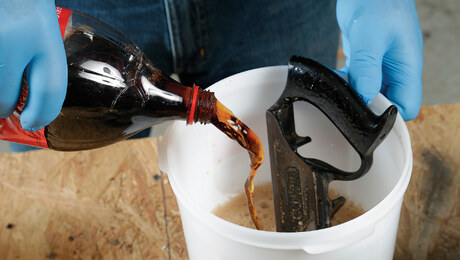
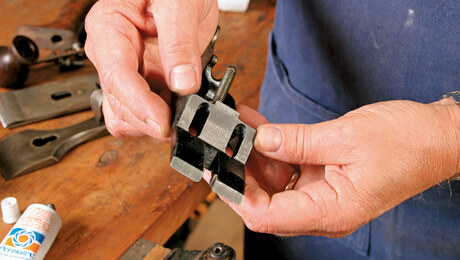
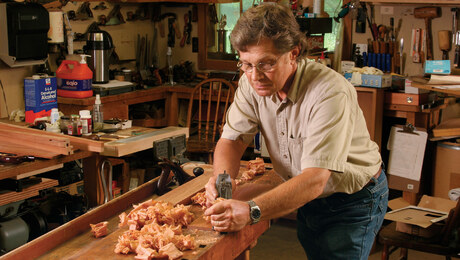
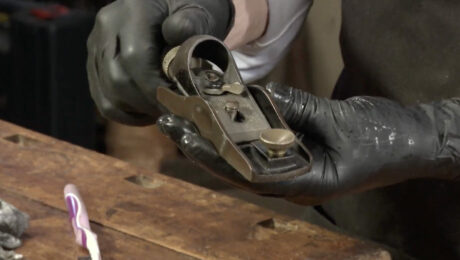
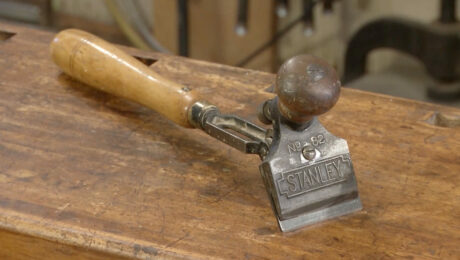






Comments
Excellent brief lesson on Stanley's. I give seminars on restoring, sharpening and tuning planes at a senior's workshop. Many have become converts to a fine working plane. They love the "whistle" of the cut.
Great intro! Looking forward to the rest of the series!
I noticed replacement blades in a couple of the planes on your bench. Will you be discussing when to replace and how to select the steel type, where there is an option to? For example, Lee Valley offers blades in A2, O1 and PM-V11 steel.
I wonder why Fine Woodworking is now giving this workshop away in an e-mail. I paid $50 for it several years ago. In fact, I’ve invested more than $500 in about a dozen of these FWW workshops. Well, it’s not the first time one of my investments has become worthless.
I have mixed feelings about your point but, as an "all in" subscriber, I can empathize.
I have restored some baily planes and had fun doing it. I now have a couple of wood planes that mainly need to be cleaned up. One of them has a cap iron on the blade (most don't). The short screw that attaches the cap to the blade is missing. Hardware stores don't have anything that will work. I'm hoping to find one on a used plane at a garage sale this summer, but I'd rather just buy the screw. Any suggestions?
Hilary,
There's lots of good resources on the web for hand plane collectors and users:
- https://www.timetestedtools.net/
- https://www.hyperkitten.com/ has lots of info on dating planes and a parts store
These two sites might answer the question "is it worth repairing this plane?"
- eBay, in particular vendor https://www.ebay.ca/str/greatcatalog has a large quantity of plane parts for sale.
- the usual used goods marketplaces on Kijjiji and Facebook for a "donor" plane. Note buying donor planes is a slippery slope because you will want to fix the donor plane which will involve buying another donor.....
- The hand plane group Hand Plane Building, Restoring and Collecting https://www.facebook.com/groups/1410047249324398/ on Facebook has a number of members who have spare parts. Join the group and ask there.
The big challenge I find is that the replacement parts can be prohibitively expensive with shipping. I recently got an Ohio 0112 veneering plane and an Ohio No 7, without a blade and with a blade almost at the end of its life. The cheapest solution will likely be to buy a new blade from Lee Valley.
Good luck!
Thank you for the links, @JPdOrleans.
Another I've found helpful: https://woodandshop.com/identify-stanley-hand-plane-age-type-study/
This seems to be an extension of the Hyper Kitten type tool, but with photos.
Hilary:
I have fallen heir to a number of old plane irons, with and without caps. Can you post a picture of the irons? I might be able to give you the screw.
I have a fair number of vintage wooden planes. Last Summer I got ambitious and cleaned them all with Murphy's oil soap as well as careful blade sharpening. I was surprised to find that all had perfectly flat soles, which were square to the sides. I now use them frequently. They are much lighter than steel and are held differently but very nice to use. Only down side is keeping the blade in position.
Brian (Stormy Knight)
p.s. I emphasize with "JPdOrleans. I recently gave up and went all in with the full package. What irks me is that I get e mail "teaser", how to videos nobut there appears to be a link to the locked out sections. One has to perform a labourius search for access to the whole series.
Second picture.
Thanks everyone for answering so quickly. Brian, I have attached a few pics. When I took it to the hardware store I discovered that a 3/8 screw was just a little bit too tight. One or 2 threads would go in but that was it. I don't know how to determine what size this carriage bolt is but it seems to fit. It is a little tight, but it works. It would be great if you had a short screw the right size. I'll also check the websites i was given . Thanks, Jane
Hilary:
The cap iron screws are very shallow, only requiring one or two turns. The screws I have are standard, regardless of blade size. I will send one to you, if you can provide mailing details. If it does not work, you can send it back.
Brian
Great. Thanks! I've been looking through the websites that "Orleans" provided but so far, no luck. If what you have is about 3/8" it might work.
My address is: Jane Hilary, 7608 Colorado ave north, Brooklyn Park, MN.
I'm mailing from Canada. Might need your zip code?
Another good source of parts appears to be Michael Jnks who is on the Hand Plane Building, Restoring and Collecting group on Facebook but also has a page JustPlaneFun at https://www.facebook.com/groups/1690633051116716
He seems to have an incredible selection of parts.
@ Rolland Johnson: I've just recently started 'going backwards' from power tools to hand tools and I'm enjoying using my grandfather's hand planes - I wasn't allowed to touch them when I was a kid. Having so much fun trying to do with them what I'm doing with a tool that cost more than 20 times the price. What an informative video - thank you - I look forward to more!
@ JWCollier: your point reminds me of a story about workers in the vineyard in Mathew 20:1-16. I've taken several classes at a local woodshop retail store - I enjoyed my time and walked away smarter. However my friend continues to make fun of me for paying a lot of $ for them. I'm sure he could save me $ if he could teach me everything they did but I have no regret. Don't look at the investment you made in your education as somehow becoming worthless - you're one of the few who took the time and are smarter for it.
My point was directed more to FWW. They hired the best instructors for these workshops and the videos are great to have in my account to re-watch as often as I like. I have built at least three projects as I followed along with the videos between workshop sessions. It seems to me that FWW is perhaps trying to build new membership by giving away what long-term members paid for. I’ve been a full-in member since 2006. I like the video format much more than wading through articles, so I am grateful to have them, although printed material is useful too for diagrams and such. Several woodworking publishers are doing live online seminars now, maybe that’s the way forward.
Just because the first video is free doesn't mean they're all free. These Taunton Workshop videos have sat unused for years now. With Covid restrictions being what they are we thought it was a great time to release them to Unlimited members. Video workshops always have a free episode or two, but only members will get the whole thing.
Also, we've done about a dozen live webinars or so in the past year. They're available here: https://www.finewoodworking.com/webinars
Your "teaser" e mails, which generally limit full viewing of a particular series, were what led me to an "unlimited" membership. I appreciate now being able to view your archive. However, as a magazine subscriber, I get the "teaser" e mails but I then have to search for the complete episodes. I suggest that the e mails going to Premium members contain a feature which unlocks all the featured episodes.
As you are aware, well used steel planes seldom have a flat sole. At the risk of being seen as a "Philistine" - a suggestion. I started flattening with water stones. Finding that too labourius, I moved to coarse emery paper on glass. Still too much work. I now start with a stationary belt sander, finishing up with water stones. Works well and much faster.
I think I purchased my first one in 2013, so yes they are getting some age on them, but the content never gets old. This one from Rollie Johnson is from 2017 and is timely for me since I am working on an old plane that was my English father-in-law's, so it has special meaning to me.
Log in or create an account to post a comment.
Sign up Log in